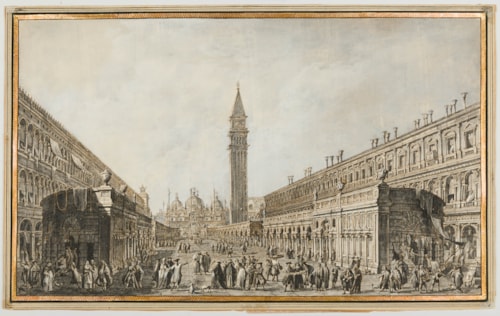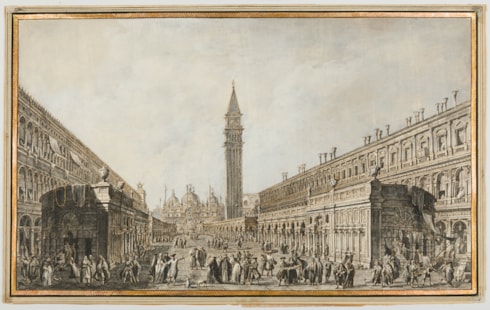
Francesco TIRONI
Friuli c.1745 - Venice c.1797
Biography
Active in the last quarter of the 18th century, Francesco Tironi was never a member of the Venetian Academy, nor was he admitted into the local city guild of painters, the Fraglia dei Pittori. (Since he was perhaps not a professional artist, it has been suggested that he might be identified with a Venetian priest of the same name, or with a stationer in Venice also named Francesco Tironi, but there is no firm evidence for either supposition.) Very little is known of Tironi’s life and career, and he only rarely appears in contemporary documents or the accounts of 19th century art historians. In his Della letteratura veneziana del secolo XVIII fino a’ nostri giorni, published in 1806, the Venetian writer Giannantonio Moschini noted in an aside that, ‘Here I will add that our Francesco Tironi is to be pitied, who died at too fresh an age some years ago, because the Ports of Venice and the Islands drawn by him, and engraved by our own Antonio Santi [sic], show us how far he would have come.’
Tironi is indeed best known today for his drawn views of the islands of the Venetian lagoon, which were engraved by the Bellunese printmaker Antonio Sandi and published by Ludovico Furlanetto as Ventiquattro isole della laguna, disegnate da Francesco Tironi, incise da Antonio Sandi in the early 1780s. He also drew a series of four views of the Venetian ports of Chioggia, Malamocco, Sant’Andrea and Murazzi, likewise engraved by Sandi. As a view painter, Tironi developed a style that combined the distinct influences of both Canaletto and Francesco Guardi. Only a handful of oil paintings have been convincingly attributed to him, however, and among the very few signed canvases by the artist is a large View of the Islands of San Michele, San Cristoforo and Murano from the Fondamenta Nuove of c.1775, today in the Staatliche Kunsthalle in Karlsruhe. In 1782 Tironi produced a number of finished drawings commemorating the visit of Pope Pius VI to Venice that year. The artist died some fifteen years later, at the age of around fifty-two.
Fewer than thirty drawings by Tironi are known, almost all of which are preparatory studies for the engravings made by Sandi. These drawings, as one scholar has noted, ‘reveal a certain amount of confidence and ease, and indicate that Tironi looked mainly to models by Canaletto, but also to Guardi.’ As Charles Beddington has further noted, ‘Although certainly not of the first rank, Tironi is an interesting and original figure. While his drawing style and compositional structure recall Canaletto’s methods to the point that one wonders if he might have worked in Canaletto’s studio, his mannered figures are closer to Francesco Guardi’s mature types.’ Drawings by Tironi in public collections include six sheets in the Victoria and Albert Museum in London and six in the Albertina in Vienna, as well as others in the Wallraf-Richarz Museum in Cologne, the Whitworth Art Gallery in Manchester, the Pierpont Morgan Library and the Metropolitan Museum of Art in New York, the National Gallery of Art in Washington, D.C., and in a handful of private collections.


